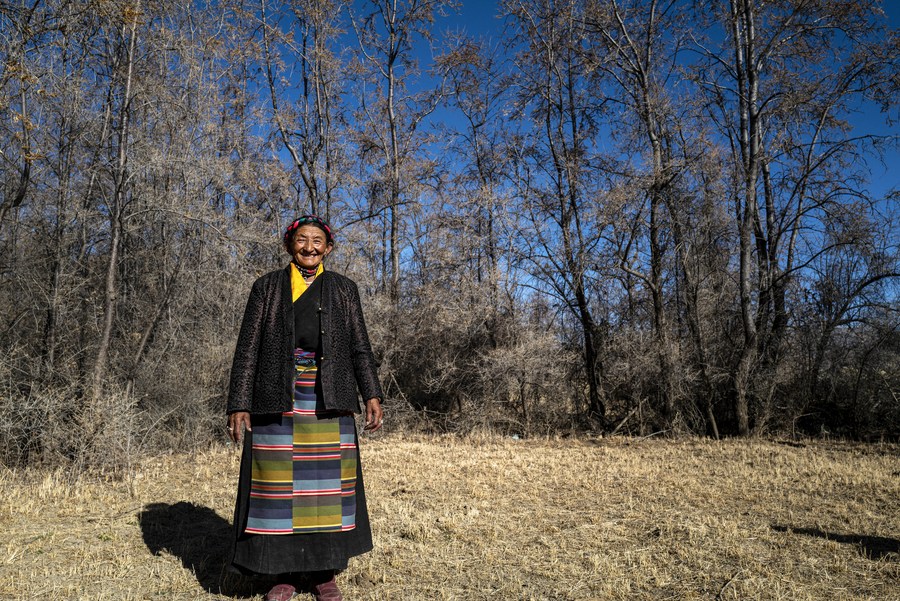
Photo taken on March 2 shows "sea buckthorn grandma" Samten in front of the sea buckthorn forest she devoted her life nurturing. (Xinhua/Lodro Gyatso)
LHASA, July 2 (Xinhua) -- Samten, who is in her 70s, takes a walk every day after sunset in the nearby forest filled with sea buckthorn trees.
Locals affectionately call her "sea buckthorn grandma" and rightly so as she has devoted years of her life to nurturing this forest surrounding the Mangtso village in southwest China's Tibet Autonomous Region.
Half a century ago, the village was plagued by severe sandstorms causing nightmares for the village dwellers. When the rainy season ended and the local Luntse river gradually dried up, the sand exposed on the riverbed used to blow with strong winds, engulfing the village.
People used to hurl sarcastic jibes at the residents of Luntse County, which administers Mangtso, saying "once you talk, the sand will fall off your body."
Located on the cold and barren Tibetan plateau, Luntse sits at an average altitude of over 3,800 meters, and barely any regular trees could survive in that harsh condition. According to the locals, planting a tree is more difficult than raising a child.
However, a large-scale plantation trial that was undertaken by the local government helped change the fate of the land for good. During the plantation only sea buckthorn stubbornly took root in the alkaline land and survived, bringing a glimmer of hope for the local environment.
Since the 1960s, people of Luntse began to fight the rough conditions with sea buckthorn trees, kicking off an "ecological revolution."
Samten was 17 at the time. Tasked with watering the seedling, she was always the last one home because she was afraid of missing any trees. She said she would even see the trees in her dreams.
Gradually, the entire county was mobilized to find seedlings and reclaim wasteland covered with gravel.
Over the past five decades, with the efforts of generations of officials and locals in Luntse, a "green barrier" stretching more than 40 km and covering an area of 50 square km has been built. It has been rated as the world's largest artificially planted sea buckthorn forest.
Luntse has witnessed great improvements in its ecological environment. The forest vegetation has gradually flourished, and cattle and sheep now have forage grass to graze. The precipitation has also increased, improving the air quality of the area, while the land salinity has decreased, boosting the production of highland barley.
More than 2,000 people have become forest rangers, and improvements in the environment have enabled modern agriculture and animal husbandry to develop, local officials said.
In 2020, the county's total revenue from the sale of sea buckthorn seedlings and fruit reached nearly 3 million yuan (about 463,000 U.S. dollars).
"Those are my grandchildren," said Samten as she strolled through the forest, caressing the thick trunks. ■




